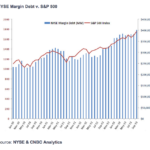Exchange-traded funds might not be as transparent as you think. The industry of exchange-traded fund issuers has already come under fire from FINRA for disclosures on leveraged ETFs, but new complaints say the transparency rules favor larger investors over smaller, retail investors saving for goals like retirement.
How Transparent are ETFs, Anyway?
Exchange-traded funds are required to publish their daily holdings and net asset values at the end of the trading day. Industry insiders have previously noted that such transparency is unprecedented – and it is. Mutual funds do not have the same disclosure rules, which is one of the many reasons why actively-managed funds often form as a traditional mutual fund rather than an exchange-traded fund.
All this transparency does not seem to be benefitting individual investors. While exchange-traded fund companies do report their NAVs and individual holdings to the market, this required reporting is limited to authorized participants – major investment banks, hedge funds, and portfolio managers. Data given to authorized participants rarely flows into public information available to individual investors.
Public sites like Yahoo Finance, for example, list the most recent NAVs for any given ETF as of October 6, 2011. That data is already several months old – virtually worthless to any public onlooker.
On fund issuers’ websites, the data is more recent. iShares and State Street Global Advisors both show NAV values from the previous trading day. Both companies also provide a downloadable database of the holdings.
However, indexing favorite Vanguard offers no such information to investors. The company releases data publicly only once per quarter.
Slowing the Niche ETF Boom
Limited NAV and holding information for smaller niche ETFs is the true problem with disclosure. Lesser-known issuers selling exotic ETFs often launch funds with small total asset sizes. The funds are so small that authorized participants have little incentive to use to the creation and redemption process to keep the price of the fund close to its immediate net asset value – the profit potential is simply too small for institutional investors.
Disclosure may ultimately slow the growth for niche ETFs in smaller and smaller spaces. Financial advisors, for example, cannot reasonably recommend an ETF to a client if the financial advisor has no baseline understanding of the fund’s value relative to its holdings. Is the fund trading for a premium or discount? Can you even know?
And let’s not forget that the creation and redemption process, if largely unused, threatens the awesome tax efficiency of exchange-traded funds.
As an investor, knowing what I own and what it’s really worth is very important. As someone who eagerly looks for new ETF products, I find it ridiculous to invest in a fund that might not provide enough liquidity for me to exit a position without paying a large bid-ask spread. So long as there is not enough public information to bring in long-term retirement investors, there will never be enough investment interest for short-term hedge strategists to keep the fund close to its NAV. The information provided to authorized participants fails to have any value if it cannot be priced into the market.
The fund will just go on the death list for later liquidation after failing to find sufficient assets to warrant another annual exchange fee to keep the ETF listed on the market.
Big Deal!
Vanguard responded to a press inquiry to say the disclosure rules were really no big deal at all; funds are supposed to track an index, and those indexes can usually be found elsewhere. That would be a great explanation if tracking error did not exist. Most funds do not adhere to the rules of the underlying index perfectly, so the performance of the underlying index is irrelevant.
Shame on you, Mr. Bogle!











{ 0 comments… add one now }